Dive into Sapa motorcycle adventure and explore the place
Sapa – the name alone is enough to make many nomadic hearts flutter. For those who love the feeling of freedom and discovery, a Sapa Motorcycle Adventure is the best thing. The feeling of the mountain wind blowing in your hair, the roar of the engine mixed with the chirping of birds, the majestic natural scenery stretching before your eyes… all create an unforgettable experience. Let’s experience this motorbike tour with the Vietnam Motorbike Tours Club through the article below.
What’s the best season for your Sapa motorcycle adventure?
Choosing the best season for your Sapa motorcycle adventure can significantly enhance your experience in this stunning highland region of Vietnam. Sapa’s dramatic landscapes and diverse weather patterns offer unique experiences throughout the year, but certain seasons provide more favorable conditions for exploring its winding roads and picturesque scenery. Choosing the right season will affect the overall experience of your entire trip to Sapa. Here are some of the most suggested seasons to visit Sapa:
September to November – Golden rice harvest
The period from September to November is considered one of the best times for a Ha Giang adventure. During these months, the rice terraces are in full harvest, turning golden and creating a stunning patchwork of color across the mountains. This season provides excellent visibility and the perfect backdrop for photography and trekking.
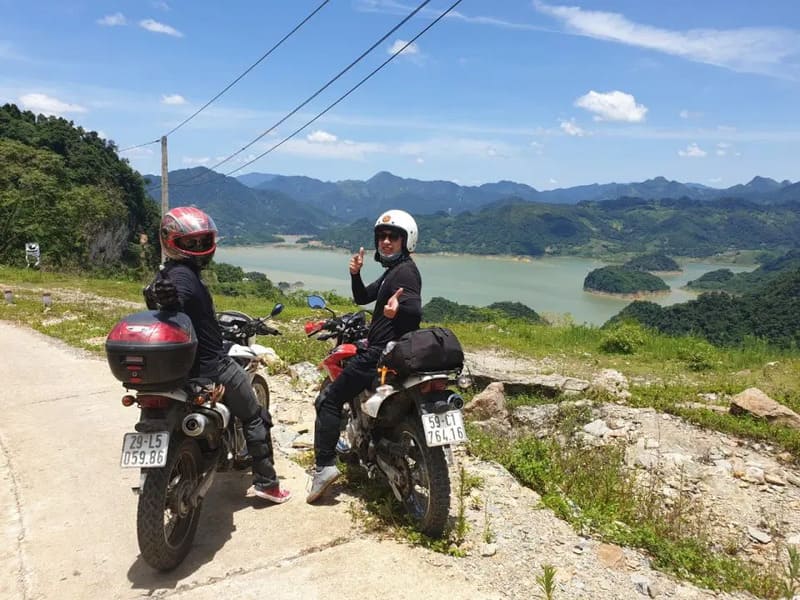
March to May – Flower bloom and pleasant temperature
From March to May, Ha Giang is adorned with vibrant flowers, including peach blossoms and buckwheat flowers. This is also a great time to visit due to the pleasant temperatures and end of the rainy season. The lush green landscape combined with blooming flowers creates a picturesque setting for outdoor activities and cultural exploration. It’s an ideal period for those who enjoy mild weather and colorful scenery.
December to February – Cool weather and frosty views
If you prefer cooler temperatures and a touch of winter magic, December to February is the ideal time for your Ha Giang adventure. During these months, the highland region experiences cooler temperatures and occasional frost, particularly in higher elevations. This period also coincides with the Vietnamese New Year, Tet, offering a unique opportunity to experience local festivals and traditions. The frosty landscapes and clear skies make it a picturesque time for photography and exploration.
June to August – Lush greenery and adventure
From June to August, Ha Giang is at its greenest, with the rice terraces and surrounding countryside lush and vibrant due to the rainy season. While occasional rain showers are common, they contribute to the region’s lush landscapes and fewer tourists. This is a great time for nature enthusiasts and those seeking a quieter, more peaceful adventure. Just be prepared for occasional rain and enjoy the cooler temperatures and vibrant greenery.
The most favorited sightseeing you must visit in Sapa
Sapa, with its mesmerizing landscapes and unique cultural heritage, offers some of the most stunning sightseeing opportunities in Vietnam. Nestled in the northern highlands, Sapa is renowned for its mist-covered mountains, terraced rice fields, and vibrant ethnic communities. Whether you’re trekking through lush valleys or gazing at the panoramic views from towering peaks, Sapa’s natural beauty captivates every traveler. If you’re planning a visit, here are the must-visit sightseeing spots that make Sapa a standout destination in Vietnam.
Fansipan mountain (The roof of Indochina)
Known as the highest peak in Vietnam, Fansipan Mountain is a must-visit for adventurers and nature lovers. Standing at 3,143 meters, it offers breathtaking views of the surrounding landscapes. Visitors can trek to the summit or take the cable car for a more leisurely ascent, providing panoramic views of the valleys and mountains below.
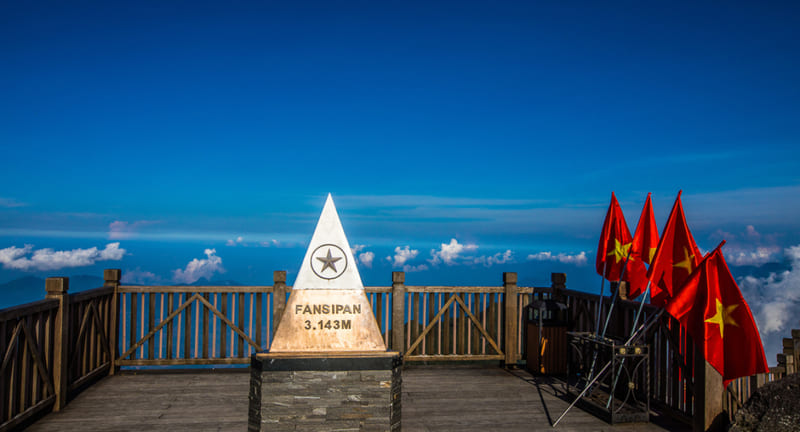
Muong Hoa valley
Famous for its spectacular terraced rice fields, Muong Hoa Valley is one of the most photographed places in Sapa. The valley is dotted with small ethnic villages, where travelers can experience the culture and traditions of local communities like the Hmong and Dao people. The contrast of vibrant green fields with the towering peaks in the background makes this valley a visual treat.
Cat Cat village
Just a short trek from Sapa town, Cat Cat Village is a traditional Hmong village offering visitors a glimpse into the daily life of ethnic minorities. Nestled amidst mountains and waterfalls, this charming village is perfect for those looking to explore local culture, handicrafts, and stunning natural surroundings.
This village is known for its incredible natural sites and its unique name ‘Cat Cat’. Originated from a beautiful waterfall named CatScat. A French explorer discovered the village during the 20th century. The spot is scattered with small houses combined with green fields, creating a vibrant and wonderful location for visitors.
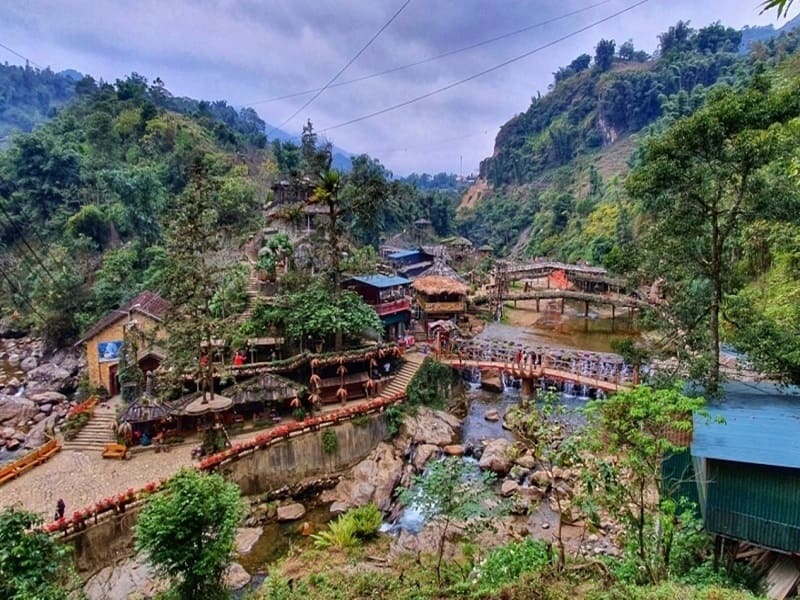
Silver waterfall (Thac Bac)
Silver Waterfall, located about 12 kilometers from Sapa town, is a striking 200-meter-high waterfall that cascades down the mountainside. Surrounded by lush greenery, it’s a refreshing and scenic spot that contrasts with the terraced fields, offering a diverse range of landscapes to explore in Sapa.
Ham rong mountain
Ham Rong Mountain, located close to Sapa town, is a popular spot for those looking to enjoy panoramic views of the town and its surrounding mountains. With beautifully landscaped gardens and stone pathways, it’s an easy hike to the top, where the views of Sapa’s misty valleys are truly breathtaking.
See more: In-depth review of Sapa Motorbike Tour 3 Days 2 Nights – Amazing Life Experiences
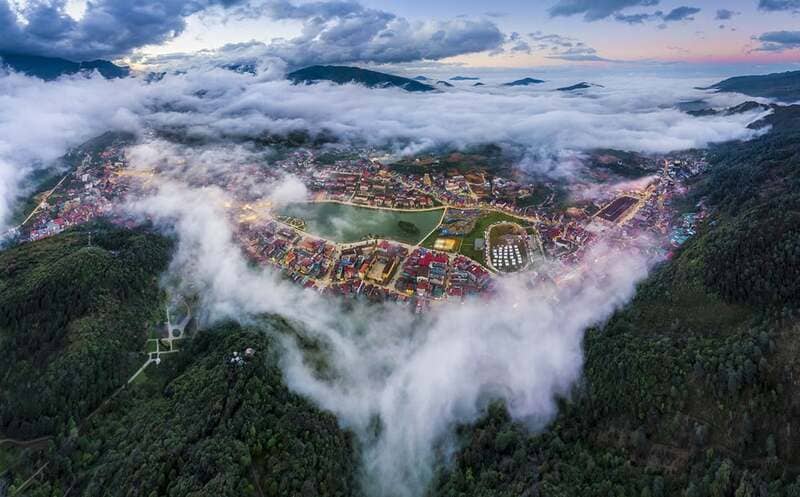
What separates Sapa’s sightseeing spots from others?
Sapa is known as a hidden gem within Vietnam with its unique aspects from cultural activities to weather conditions and humidity. While central cities boast beaches, historical sites, and ancient architecture, Sapa’s charm lies in its rugged mountains, ethnic villages, and terraced rice fields. The cool mountain climate, combined with misty landscapes and unspoiled natural beauty, sets Sapa apart from the more tropical and urban attractions of central Vietnam. The deep connection to nature, the vibrant local culture, and the highland terrain create a peaceful, almost mystical atmosphere that is unique to Sapa, offering travelers a truly different and unique experience from other Vietnam’s central cities.
What is the budget per person to travel to Sapa?
In order to enjoy and make the most out of your journey to Sapa, you have to consider key expenses such as accommodations, transportation, foods and activities. Let’s together break down the necessary costs when traveling to Sapa:
– Transportation costs
Traveling from Hanoi to Sapa is one of the most common routes for visitors. A round-trip sleeper bus ticket typically costs between 400,000 VND to 700,000 VND (approximately $16 to $28 USD), while a sleeper train may range from 500,000 VND to 1,000,000 VND ($20 to $40 USD), depending on the class of service. Once in Sapa, many travelers opt to rent a motorbike, which costs around 100,000 VND to 150,000 VND per day ($4 to $6 USD), making it an affordable option for exploring the region’s villages and scenic spots.
– Accommodation
Sapa offers a variety of accommodations to suit different budgets. For budget travelers, homestays provide an authentic experience, with prices ranging from 150,000 VND to 300,000 VND per night ($6 to $12 USD). For those seeking mid-range comfort, hotels in Sapa typically cost between 500,000 VND and 1,200,000 VND per night ($20 to $50 USD), offering modern amenities and convenience. If you’re looking for a more luxurious experience, resorts like Topas Ecolodge can cost between 2,500,000 VND to 5,000,000 VND per night ($100 to $200 USD), providing breathtaking views and top-notch services.
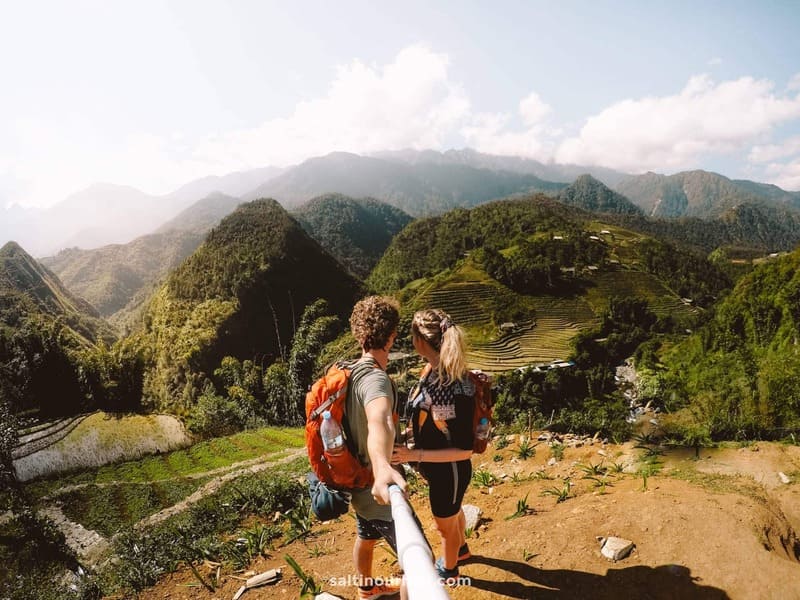
– Food and dining
Sapa’s local cuisine is both affordable and delicious. You can enjoy traditional street food or local dishes for around 30,000 VND to 70,000 VND per meal ($1.50 to $3 USD). If you prefer dining at a restaurant, mid-range establishments typically charge 100,000 VND to 200,000 VND per person ($4 to $8 USD), offering both Vietnamese and Western options. This makes it easy to enjoy great food without breaking the bank.
– Trekking and activities
Sapa is famous for its trekking opportunities, and guided trekking tours cost between 300,000 VND to 600,000 VND per day ($12 to $24 USD). These tours are perfect for exploring the stunning rice terraces and ethnic villages. For multi-day treks that include meals and accommodation, prices range from 1,200,000 VND to 2,500,000 VND ($50 to $100 USD). If you’re planning to visit Fansipan Mountain, the highest peak in Vietnam, the cable car ride costs around 700,000 VND ($28 USD) for a round trip.
– Miscellaneous expenses
Additional costs to consider include souvenirs and tips. Handmade souvenirs like textiles and crafts at local markets usually cost between 50,000 VND to 300,000 VND ($2 to $12 USD). While tipping is not mandatory in Vietnam, it is appreciated. A tip of 50,000 VND to 100,000 VND ($2 to $4 USD) for guides or homestay hosts is a nice gesture for excellent service.
In total, a budget trip to Sapa may cost around 2,000,000 VND to 3,500,000 VND ($80 to $140 USD) for a 3-day visit, while mid-range travelers can expect to spend around 5,000,000 VND to 7,000,000 VND ($200 to $280 USD). For a more luxurious experience, travelers should plan for 10,000,000 VND to 15,000,000 VND ($400 to $600 USD).
Forget about planning, booking or finding your way. Sapa motorbike tours will take care of everything for you. Just pack your backpack and enjoy the adventure on the winding mountain passes. With the support of a local guide, you will have a deep experience of Sapa’s culture, people and nature. You can refer to some cheap and quality Sapa motorbike tours below:
- Off-road Sapa Motorbike Tour via Mu Cang Chai – 4 days
- Ha Giang Motorbike Tour from Hanoi, Ha Giang to Sapa – 6 days
- Off-road Vietnam Camping Enduro tour from Hanoi to Sapa – 6 days
Tips when purchasing stuff in Sapa
To keep your money’s worth and assure the fees of your entire journey are reasonable, it is important to keep in mind tips when purchasing stuff in Sapa. Bargaining and being respectful are crucial to avoid yourself from overpaying. Here are various tips that will help you purchase items reasonably:
Bargain respectfully
Bargaining is an integral part of the shopping experience in Sapa. Whether you’re buying souvenirs, textiles, or local crafts, most vendors expect customers to haggle over the price. Start by offering a price lower than the one given, and negotiate with a smile. It’s important to remain respectful and polite throughout the process to maintain a friendly exchange and secure a fair deal for both you and the vendor.
Verify authenticity
Sapa is renowned for its traditional handmade items, especially ethnic textiles and silver jewelry. To avoid buying mass-produced or fake items, take time to inspect the quality of the product. For textiles, look for handwoven patterns and natural dyes, which are common among local ethnic groups. When purchasing silver, ensure it’s genuine by checking the weight and feel of the item. Buying authentic, handmade goods will not only give you a unique souvenir but also support the local artisans who create them.
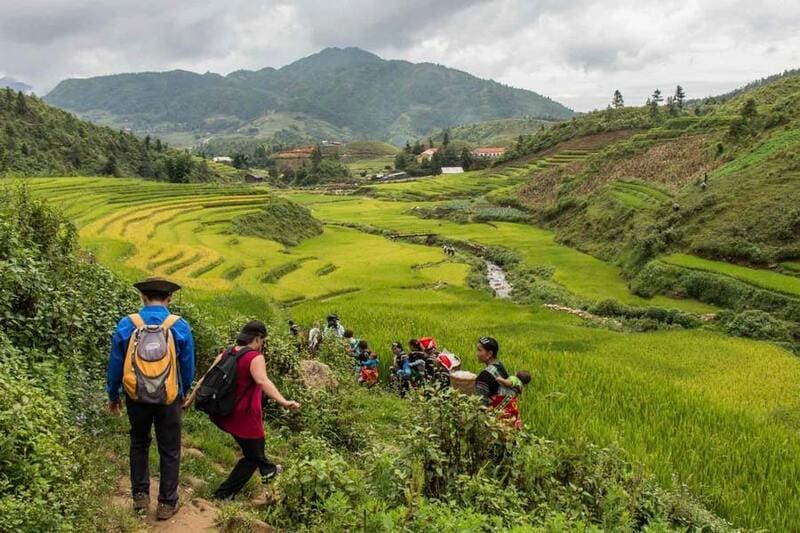
Carry cash
Many small vendors and market stalls in Sapa prefer cash transactions. It’s advisable to carry enough Vietnamese Dong in small denominations, as credit cards are rarely accepted in local markets. It is best to prepare a certain amount of cash, ensuring your shopping experience to be smooth and convenient for you and the seller. There are numerous ATMs available across central spots in Sapa for tourists or visitors to withdraw money.
Support local artisans
When purchasing goods, seek out stalls and shops run by local ethnic minorities like the Hmong, Tay, or Red Dao people. These artisans often sell handcrafted goods, including embroidered fabrics, handwoven bags, and traditional clothing. By buying directly from these communities, you’re supporting the preservation of their culture and craft while helping boost the local economy.
See more: Sapa Motorbike Tours – Useful Tips For First-time Travelers
Above are the shares of Vietnam Motorcycle Tours about Sapa motorcycle adventure. Hopefully through the article, you have more useful information to have a safer and smoother trip. If you have any questions related to the trip, you can contact us for advice and answers.
Contact us for more interesting information
- Address: 3/7/36 Duy Tan Street, Cau Giay District, Ha Noi City
- Mobile: +84 976 024 986
- Email: [email protected]
- Website: https://vietnammotorbiketoursclub.com/
RELATED POSTS
Northern Vietnamese Cuisine – The Quintessence of Vietnamese Culture
Cuisine is a natural cultural feature formed in life, when mentioning Northern Vietnamese cuisine, it is not difficult to recognize the light, delicate flavor and...
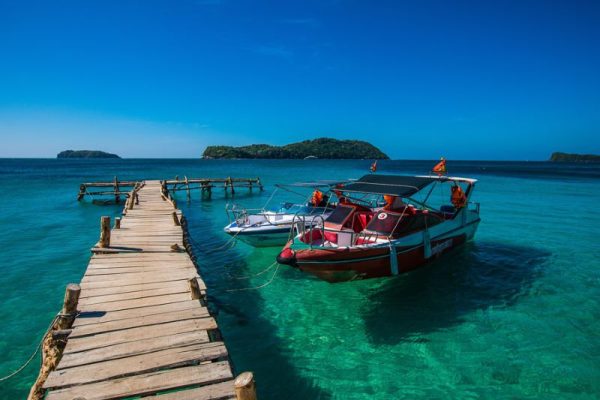
Phu Quoc Island Vietnam: Location, climate and scenery
Phu Quoc is a famous tourist destination, attracting millions of domestic and foreign tourists every year. In this article, Vietnam Motorbike Tours Club will introduce...
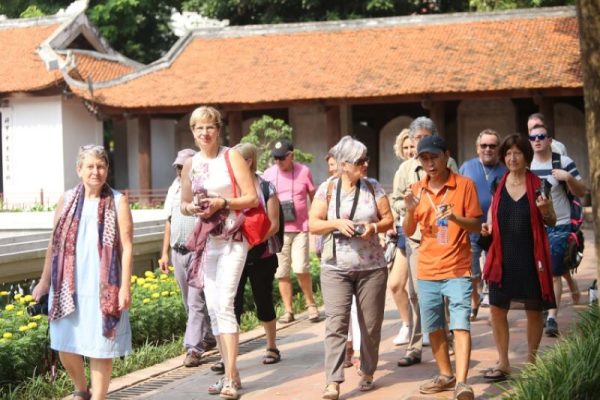
10 common mistakes made by foreign tourists when coming to Vietnam
With its rich history and culture, Vietnam has become an attractive destination for international tourists. However, to have a complete trip and avoid unwanted situations,...




